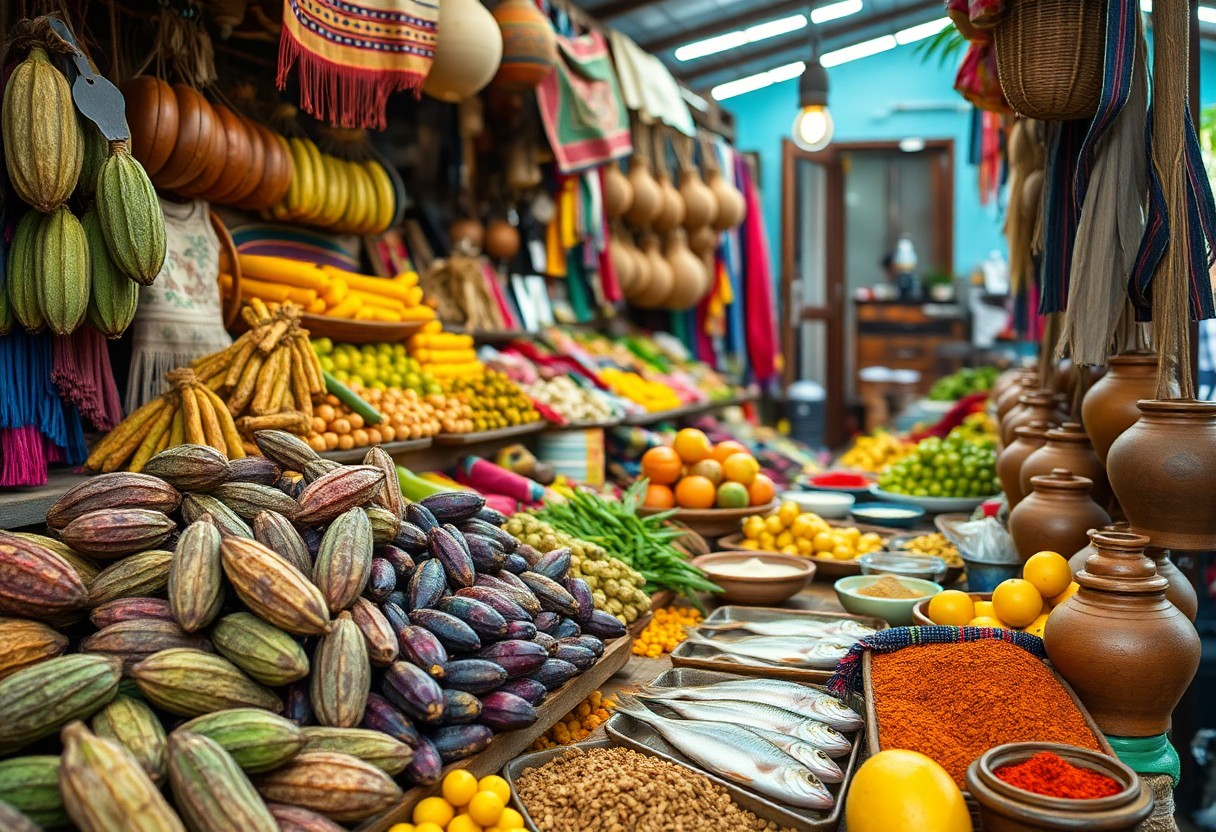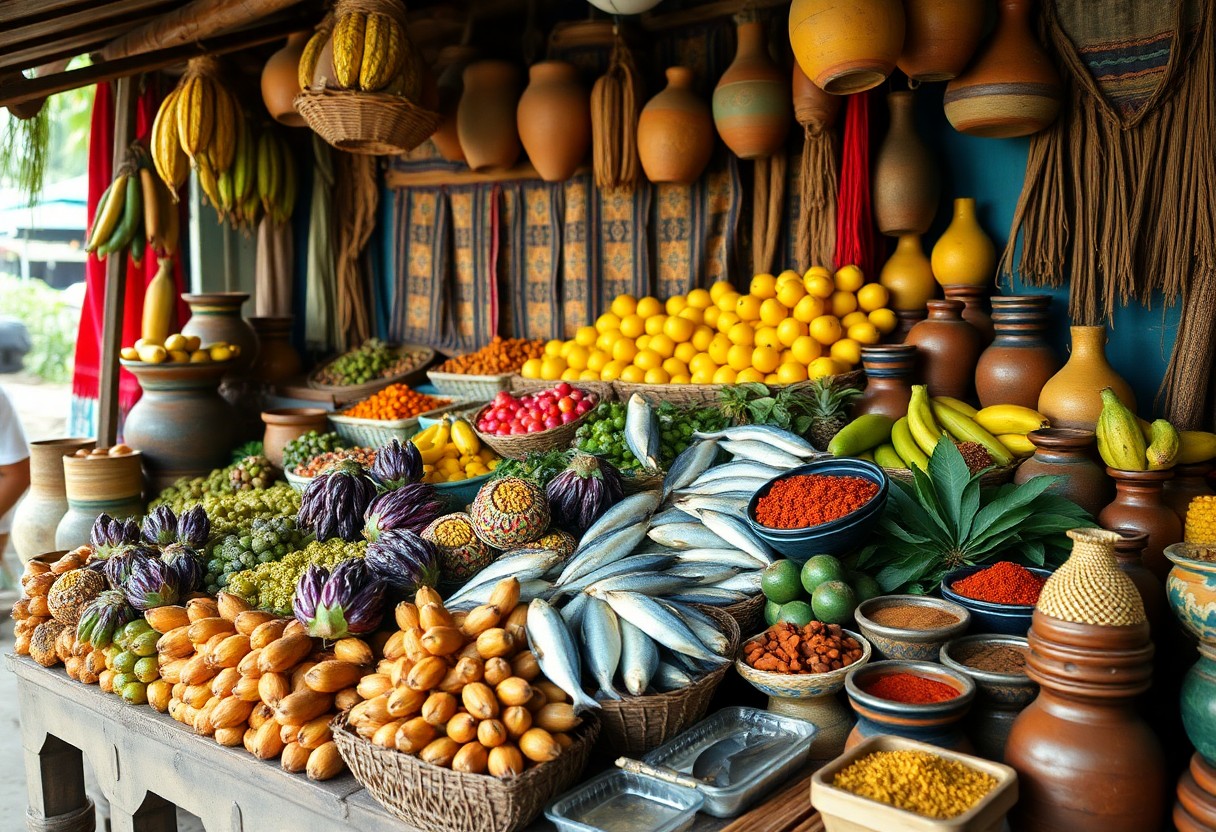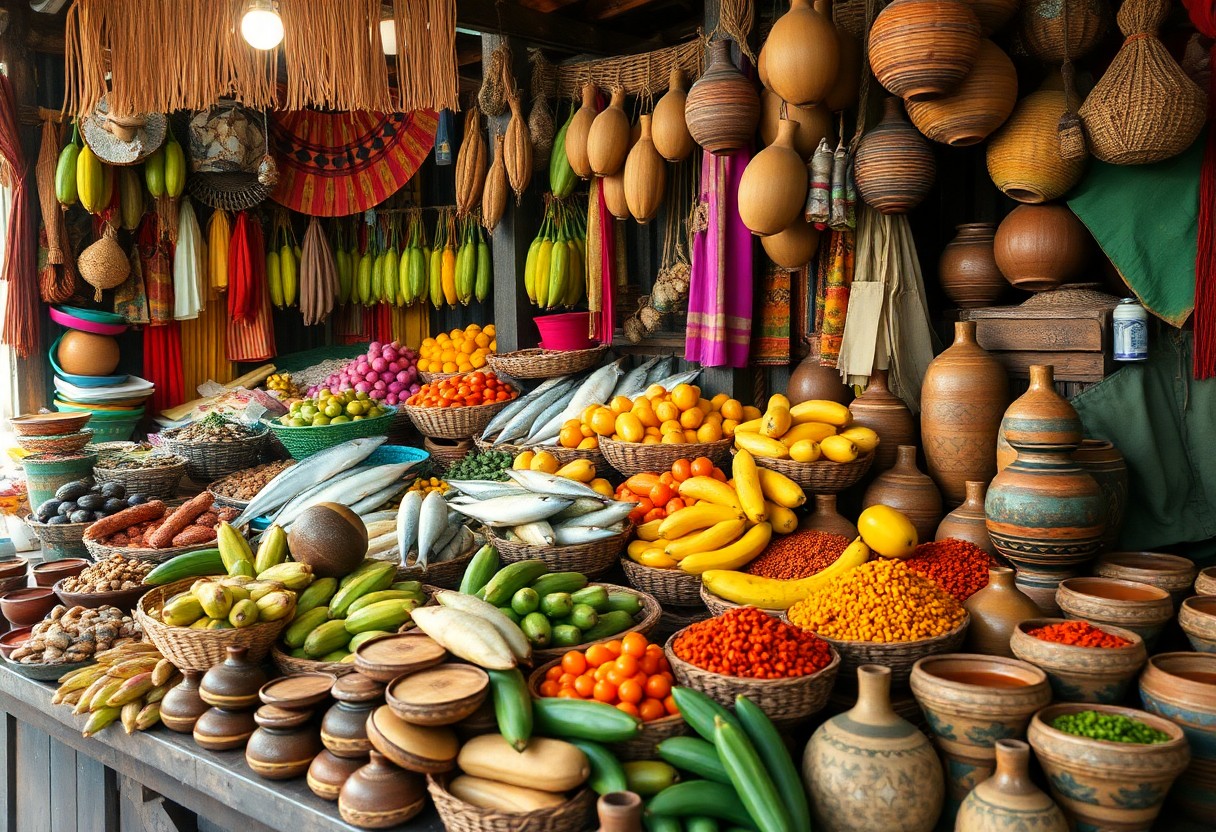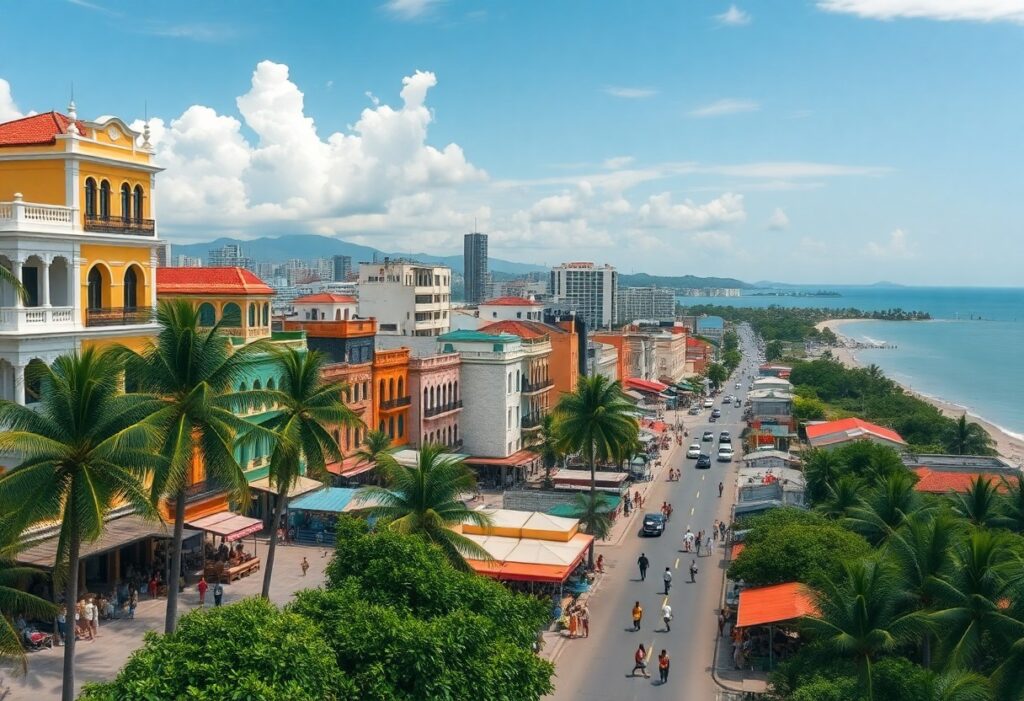Are you overwhelmed by the choices of where to eat in Belize? Your culinary journey through this diverse Central American nation can positively impact local communities while satisfying your taste buds. From Corozal’s sustainable seafood to Toledo’s organic cacao farms, you’ll discover how your food choices support local farmers, fishers, and artisans. Each district offers unique flavors that reflect its cultural heritage and ecological richness. Whether sampling Maya-inspired dishes or tasting Garifuna delicacies, your food adventures will help preserve traditional farming methods and support small-scale producers who maintain Belize’s food sovereignty.
Understanding Local Ingredients and Responsible Tourism
The connection between local ingredients and responsible tourism in Belize creates a unique opportunity to experience authentic cultural heritage while supporting sustainable practices. Your food choices directly impact local communities, from small-scale farmers to indigenous producers, helping preserve traditional farming methods and culinary traditions.
Types of Local Ingredients by District
Each district in Belize offers distinct local ingredients reflecting its unique ecosystem and cultural heritage:
- Corozal: Fresh seafood and locally grown citrus
- Orange Walk: Sugarcane and corn products
- Belize District: Cashews and traditional spices
- Cayo: Organic vegetables and cacao
- Stann Creek: Tropical fruits and seaweed
Visiting these districts allows you to taste authenticity while supporting local communities.
| District | Signature Ingredients |
|---|---|
| Corozal | Snapper, Shrimp |
| Orange Walk | Sugar, Coffee |
| Belize | Cashews, Coconuts |
| Cayo | Cacao, Corn |
| Toledo | Chocolate, Spices |
Importance of Sustainable Food Practices
Practices in sustainable food production help preserve Belize’s biodiversity while supporting local economies. Your choice to consume locally sourced ingredients contributes to reducing your carbon footprint and maintaining traditional farming methods.
Ingredients sourced through sustainable practices ensure the preservation of natural resources and support fair trade relationships with local farmers. Your participation in food-based tourism activities directly contributes to the economic stability of small-scale producers and helps maintain traditional agricultural practices.

District-Specific Food Experiences
It’s time to embark on a culinary journey through Belize’s six unique districts. Each offers distinct flavors and sustainable food experiences that connect you directly with local communities and their traditions.
Northern Districts (Corozal and Orange Walk)
With their rich Maya heritage and agricultural roots, you’ll discover why these districts are known as Belize’s sugar belt and street food paradise. Your taste buds will dance with traditional Mestizo flavors, from hand-caught seafood in Corozal to Orange Walk’s famous tacos served with fresh-pressed sugarcane juice.
Central Districts (Belize and Cayo)
The heart of Belize offers a blend of colonial influences and Indigenous traditions. Here, you’ll find fresh-roasted cashews, traditional Creole dishes, and authentic Maya cuisine prepared using ancient techniques preserved through generations.
District-specific delicacies showcase the region’s biodiversity, from organic corn-based dishes in San Antonio Village to British-influenced desserts with a Belizean twist in Belize City. Your culinary adventure supports local women’s cooperatives and community-based tourism initiatives.
Southern Districts (Stann Creek and Toledo)
Orange groves, cacao farms, and coastal flavors define your southern Belize experience. In Placencia, you’ll taste sustainable seaweed smoothies and sample authentic Garifuna cuisine while supporting local drumming traditions.
Northern Toledo’s cacao trails lead to organic chocolate-making demonstrations, where local farmers share their fair-trade practices. Your visit supports Indigenous communities and helps preserve traditional farming methods that have sustained these regions for generations.
Tips for Responsible Food Tourism
Focus on local food experiences and community-based initiatives to ensure your culinary journey remains sustainable. Support small-scale farmers, visit local markets, and choose family-owned restaurants over commercial establishments. This approach helps preserve Belize’s culinary heritage while contributing to local economies.
Supporting Local Communities
To maximize your positive impact, consider these essential practices:
- Purchase ingredients directly from local farmers
- Join community cooking classes
- Visit Indigenous food cooperatives
- Choose locally-owned accommodations
- Participate in traditional food festivals
Environmental Considerations
For mindful food tourism, choose establishments that practice sustainable sourcing and maintain zero-waste policies. Support restaurants using seasonal ingredients and implementing water conservation measures. Your choices directly impact Belize’s environmental preservation.
Another vital aspect is your carbon footprint while exploring Belize’s culinary scene. Choose restaurants within walking distance or use public transportation. Avoid single-use plastics and opt for establishments that use biodegradable packaging. Your food choices can help protect Belize’s delicate ecosystems, including the world’s second-largest barrier reef.

Step-by-Step Guide to Food Exploration
For your culinary adventure across Belize’s districts, follow this comprehensive guide to discover authentic local ingredients and support sustainable food practices. Your journey through Belize’s six unique districts offers opportunities to experience traditional cooking methods and taste region-specific delicacies.
District | Signature IngredientsCorozal | Fresh seafood, habanero peppersOrange Walk | Sugarcane, corn, organic coffeeBelize | Cashews, coconuts, local spicesCayo | Organic maize, traditional herbsStann Creek | Seaweed, citrus, plantainsToledo | Cacao, organic spices
Planning Your Culinary Journey
With proper planning, you can maximize your food exploration experience. Research seasonal availability of ingredients and plan your visits to coincide with local food festivals. Your itinerary should include visits to farmers’ markets, cooking classes, and food producers across different districts.
Engaging with Local Producers
For an authentic experience, connect directly with local farmers and artisanal food producers. Participating in community-based tourism supports sustainable farming practices and helps preserve traditional food preparation methods.
For instance, you can visit the San Antonio Women’s Cooperative in the Cayo District to learn traditional corn grinding techniques or join the seaweed farmers in Placencia to understand sustainable aquaculture. Your involvement provides direct economic benefits to local communities while ensuring the preservation of Belize’s culinary heritage.
Critical Factors in Responsible Food Tourism
Responsible food tourism focuses on sustainable practices and authentic cultural experiences, unlike mass tourism. When you explore Belize’s culinary landscape, you’ll encounter farm-to-table initiatives, traditional cooking methods, and local ingredient sourcing. This approach ensures both environmental preservation and community benefits.
Cultural Preservation
Responsible food tourism helps you connect with Belize’s rich heritage through traditional recipes and cooking techniques. When you participate in local cooking classes or visit traditional markets, you support preserving centuries-old culinary traditions. This cultural exchange creates meaningful connections between visitors and local communities.
Economic Impact
Tourism centered around local ingredients creates direct economic benefits for Belizean communities. When you dine at local establishments and purchase from small-scale producers, you contribute to the sustainable development of local food systems.
The economic ripple effect extends beyond immediate food purchases. Your participation in culinary tours, cooking classes, and farm visits helps create jobs and supports small businesses throughout Belize’s six districts. Local farmers receive fair product compensation, while traditional food artisans can maintain their livelihoods.
- Support local farmers and producers.
- Preserve traditional cooking methods
- Reduce food miles and carbon footprint
- Promote cultural understanding

Pros and Cons of Food Tourism
Now you can explore Belize’s dynamic world of food tourism, where traditional recipes meet modern gastronomy. Your culinary journey offers unique insights into local culture while supporting community-based tourism initiatives.
Food Tourism Analysis
| Pros | Cons |
|---|---|
| Preserve local food traditions | Risk of over-commercialization |
| Supports local farmers | Seasonal availability limitations |
| Creates economic opportunities | Potential price inflation |
| Cultural exchange | Environmental impact concerns |
| Sustainable agriculture promotion | Quality control challenges |
Benefits for Local Communities
An investment in food tourism directly impacts Belize’s local communities. Your participation helps generate up to 80% more income for small-scale farmers and food producers than conventional tourism models.
Challenges and Solutions
With increasing tourist numbers, Belize faces the challenge of maintaining authenticity while meeting visitor demands. Overtourism and resource strain require careful management.
Solutions include implementing visitor capacity limits, promoting off-season travel, and establishing community-led tourism cooperatives. Your choice to visit smaller, family-owned establishments helps distribute tourism benefits evenly across communities.
Summing up
Conclusively, your culinary journey through Belize’s districts offers more than just flavors – it provides a gateway to responsible tourism and cultural preservation. From Corozal’s sustainable fisheries to Toledo’s organic cacao farms, you’ll discover how local ingredients connect directly to community development and environmental conservation. By choosing these authentic food experiences, you support small-scale farmers, traditional practices, and indigenous communities while creating meaningful memories. Your food choices in Belize can positively impact local communities while satisfying your appetite for adventure and authenticity.
FAQ
Q: What makes Belize’s ingredients sustainable, and how can tourists support local communities through food?
A: Belize’s ingredients are sustainable through traditional farming methods, like shade-grown coffee in Gallon Jug Estate and organic Maya farming practices in San Antonio Village. Tourists can support local communities by joining cooking classes with the San Antonio Women’s Coop, purchasing fair-trade cacao from small farmers in Toledo, or eating at family-owned establishments. These activities directly support local economies while preserving cultural heritage and sustainable practices.
Q: Which districts in Belize offer the most unique culinary experiences for responsible tourists?
A: Each district offers distinct culinary experiences: Toledo District offers organic cacao and chocolate making, Stann Creek offers Garifuna cuisine and sustainable seaweed farming, and Orange Walk offers traditional Mestizo dishes. The Cayo District stands out for authentic Maya cuisine and cooking classes, while Corozal offers sustainable seafood experiences. These experiences combine local ingredients with cultural preservation and community support.
Q: How can visitors combine wildlife conservation with culinary tourism in Belize?
A: Visitors can engage in wildlife conservation while exploring Belize’s cuisine through several activities: volunteering at Wildtracks while enjoying fresh seafood in Corozal, bird watching at Crooked Tree Wildlife Sanctuary while sampling cashew products, or visiting the Belize Raptor Center in Cayo while experiencing traditional Maya cuisine. These combinations support both conservation efforts and local food cultures.



